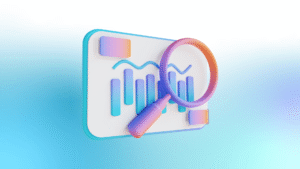Women’s apparel market hit an impressive US$1.002 trillion in 2023. But a startup needs more than just this number to understand its real market share. TAM SAM SOM analysis is a vital framework that helps businesses make informed decisions.
The total women’s apparel market (TAM) shows massive potential. A US-based startup’s serviceable market (SAM) typically reaches around $172 billion when targeting women aged 25-65. Our experience with startups has taught us the right way to calculate market size. Let us walk you through these metrics step by step.
This piece breaks down the meaning of TAM SAM SOM with practical calculation methods that help you avoid common market sizing mistakes. You’ll learn to set realistic revenue targets based on actual market potential, whether you’re launching a new product or exploring a new market.
What TAM SAM SOM Really Means for Startups
Market metrics are the foundations of successful startup planning. Let’s break these significant concepts into clear, practical insights.
Simple definitions made easy
TAM (Total Addressable Market) shows the maximum revenue chance available when your product captures 100% of the market. Your dream scenario unfolds here – the total need for your product or service without any limitations.
SAM (Serviceable Addressable Market) represents the part of TAM that your business can realistically target with your current business model. This takes into account real-world limits like geographic location, pricing, and distribution channels.
SOM (Serviceable Obtainable Market) shows the actual slice of SAM that your business can capture soon. This metric helps you set realistic short-term growth targets and guides your immediate business decisions.
Why startups need these metrics
Market sizing metrics serve many vital purposes for startups. They help confirm business ideas by showing clear insights about market potential and revenue chances.
These metrics play a vital role in:
- Setting realistic revenue goals and tracking progress
- Making smart decisions about marketing and sales strategies
- Finding new growth chances in existing markets
- Using budgets wisely to get the best results
Key differences between TAM, SAM and SOM
Scope and practicality set these metrics apart. TAM shows your ultimate market chance – the ceiling for your market dreams. SAM narrows this down to segments you can effectively target based on your current capabilities and resources. SOM zooms in further to reveal what you can achieve soon, usually within 1-3 years.
Investors value these differences greatly. A well-calculated TAM shows market potential, SAM reveals targeting strategy, and SOM highlights immediate chances your business can capture. This comprehensive approach helps startups avoid overestimating their market reach and focus on achievable goals.
Quick Market Size Calculation Methods
Market size metrics need a systematic approach with reliable data backing. Let’s look at some practical methods for each metric.
TAM calculation with examples
You can calculate Total Addressable Market in two main ways. The bottom-up method starts by counting total potential customers and multiplying by average annual revenue – it’s usually more accurate. To name just one example, a SaaS company might identify 1 million potential customers with an average annual contract value of AUD 764.50. Their TAM would be AUD 764.50 million.
The top-down approach starts with broad market data and narrows it down to specific segments. This method works well when detailed customer data isn’t easily accessible, though early-stage startups might find it less precise.
SAM calculation step by step
You’ll need a more focused approach to calculate Serviceable Available Market. Here’s the process:
- Identify specific target segments within TAM
- Calculate potential customers in these segments
- Multiply by average annual revenue per customer
- Apply relevant philtres based on geographic reach and product capabilities
Here’s a real-life example: if your TAM shows AUD 1.53 billion, but you only serve urban areas that make up 60% of the market, your SAM would be AUD 917.39 million. This gives you a more realistic view of your actual market chance.
SOM calculation made easy
The Serviceable Obtainable Market calculation focuses on what you can achieve in the near term. To get your SOM number:
- Take your previous year’s market share percentage
- Multiply it by the current year’s SAM
On top of that, these factors affect your SOM:
- Product quality and uniqueness
- Competitive landscape strength
- Historical business performance
- Current market reach
Let’s look at a practical example. A startup might capture 10% of their SAM in the previous year. This percentage multiplied by the current SAM of AUD 917.39 million would give a SOM of AUD 91.74 million.
Note that market sizing calculations work as strategic tools rather than exact predictions. Using multiple data sources and validation methods will give more accurate estimates. Industry reports, customer surveys, and competitive analysis can help refine your calculations.
Real Startup Examples of TAM SAM SOM
Ground examples give us a clear picture of how businesses use TAM SAM SOM analysis. Let’s get into two different cases that show these metrics at work.
SaaS startup case study
A project management software company targets medium to large-sized businesses in the technology sector. Their market analysis gave an explanation that changed how they saw their potential reach.
The company’s TAM includes the entire ground evidence solutions market, valued at AUD 2.6 billion in 2023. Their SAM targets technology companies that need project management tools, estimated at AUD 917.39 million. Based on their current capabilities and market position, they set their SOM target at AUD 91.74 million for the first year.
The sort of thing I love about their soaring win is their focus on negative churn – customers who stick around and buy more services over time. This approach helped them spot their most profitable market segments and fine-tune their growth strategy.
E-commerce market sizing example
An e-commerce startup that makes handmade jewellery shows another eye-opening case of market sizing. Their analysis revealed clear market segments and growth potential.
Their original TAM calculation covered the entire e-commerce market, worth AUD 22.93 billion. All the same, by zeroing in on the handmade jewellery segment, they narrowed their SAM to AUD 15.29 billion. The company aimed to secure 5% of their SAM within the first two years as their SOM target.
Their market sizing strategy definitely paid off when they:
- Targeted high-density urban areas
- Picked specific customer demographics
- Dominated premium market segments
The ground evidence solutions market, where both companies operate, should grow at a CAGR of 8.4% from 2024 to 2030. This growth affects both SaaS and e-commerce sectors, driven by rising digital adoption and changing customer priorities.
These examples show how different businesses can apply TAM SAM SOM analysis to their specific markets. The SaaS company’s focus on tech sector clients and the e-commerce business’s targeted approach to handmade jewellery highlight how market sizing shapes strategic decisions and resource allocation.
Common Market Sizing Mistakes
Market sizing is the life-blood of successful business planning. Many startups don’t get this vital step right. Let’s get into the most common pitfalls and how to fix them.
Overestimating market size
Optimism often guides startups to inflate their market potential. Two psychological biases create this tendency to overestimate: natural optimism and anchoring bias. Entrepreneurs who get carried away with optimistic projections might face decisions that get pricey when allocating resources and planning marketing strategies.
Overestimation can also cause:
- Unrealistic revenue forecasts and expectations
- Inefficient marketing campaigns
- Production and supply chain management difficulties
- Excess inventory challenges
Ignoring market trends
Market conditions never stay still. Consumer priorities and competitive landscapes shape them constantly. Accurate sizing calculations need current market trends. Many businesses miss significant factors like tech advances, regulatory changes, and shifting consumer behaviour patterns.
Companies of all sizes find that cultural differences and economic conditions make a ‘one-size-fits-all’ approach impractical. Market sizing models should adapt to specific geographical contexts and factor in local elements that might alter market penetration.
Not validating assumptions
Proving assumptions right forms the life-blood of solid market analysis. Many entrepreneurs rely too much on secondary data that might be outdated or inaccurate. This creates strategies built on shaky foundations that could undermine business success.
Businesses should use multiple methods to verify their assumptions. Data accuracy improves when you cross-check information from different sources. Getting feedback from potential customers, industry experts, and stakeholders adds valuable insights.
Markets keep evolving, so regular reassessment matters. Immediate data gathering and staying flexible help define total addressable markets, especially in emerging or niche sectors. Companies can uncover true market dynamics and adjust their strategies through careful analysis of competition.
Tools for Market Size Analysis
Startups need the right tools for market analysis to make evidence-based decisions about their TAM, SAM, and SOM calculations. Here are the most effective tools you can use for market sizing in 2025.
Free market sizing tools
Google Trends stands out as a powerful resource to understand market dynamics. The tool helps identify consumer interests and market changes across regions. Startups can track emerging market opportunities through real-time insights into search term popularity.
Census Business Builder gives great data to brick-and-mortar businesses that want geographic expansion. The tool’s core metrics include:
- Population demographics
- Average household income
- Education levels
- Consumer spending patterns
Think With Google delivers complete insights about digital marketing trends and consumer behaviour patterns. Startups find this tool valuable to understand their market position in the digital world.
Paid analysis software
Statista leads the market research platforms with coverage of 170 industries in 150 countries. The platform’s subscription costs AUD 304.27 per month. Users can buy single complete reports for AUD 756.85.
Semrush’s Market Explorer tool costs AUD 213.98 per month and provides detailed competitor analysis and market insights. The platform has features like Traffic Analytics and EyeOn to monitor competitors’ online marketing strategies.
Meltwater offers sophisticated market research through its suite of tools. The platform analyses billions of data points and helps businesses make informed decisions about their market positioning.
Data sources for 2025
National statistical sources are the foundation for market sizing calculations. Government agencies, ministries, official statistical offices, and banking institutions provide essential data about economies and demographics.
International databases use standardised data calculation methods to ensure cross-country comparability. This standardisation is vital for startups targeting global markets.
Financial statements of publicly listed companies reveal:
- Business performance metrics
- Market position indicators
- Historical growth patterns
- Potential market opportunities
Web scraping and social media analysis provide real-time market insights when conducted within data privacy laws. Competitive intelligence data helps confirm market assumptions and refine sizing calculations.
Market reports from publishers like Mordor Intelligence and Fortune Business Insights can get pricey but deliver credible data to boost market size estimations. These reports often analyse market trends, competitive landscapes, and growth projections.
Startups can build complete market sizing models by combining these tools and data sources. Businesses can develop accurate TAM, SAM, and SOM calculations through systematic analysis and data validation from multiple sources to guide their strategic decisions.
Conclusion
Market sizing through TAM SAM SOM analysis plays a crucial role in startup success. Breaking this process into manageable steps makes it achievable for any business, despite its apparent complexity.
SaaS and e-commerce companies have demonstrated the effective use of these metrics. Their success stories show how accurate market sizing helps allocate resources and plan strategies better. Calculating these numbers matters, but understanding how they shape business decisions matters more.
Smart startups update their market sizing regularly. Markets evolve faster, making yesterday’s calculations potentially obsolete today. Accurate calculations depend on the right mix of free and paid tools combined with reliable data sources.
A startup’s success often hinges on its understanding of market potential. Smart businesses prioritise realistic SAM and achievable SOM targets instead of focusing on large TAM numbers. This practical mindset helps companies avoid overestimation and build sustainable growth.
Startups can now tackle market sizing confidently with these insights. These tools and methods will create precise market size calculations that impress investors and stimulate business growth.
Author
-

Managing Director of one of Australia's leading Digital Marketing Agencies... With over 7+ years of hands on experience in SEO, managing both national & international organisations SEO strategy and campaign distribution. Having won several international awards (Search Awards, Clutch, TechBehemoth etc.) for both paid media and search campaign success... He is a front runner in leading search and defining the playbook for the Australian market.
View all posts











